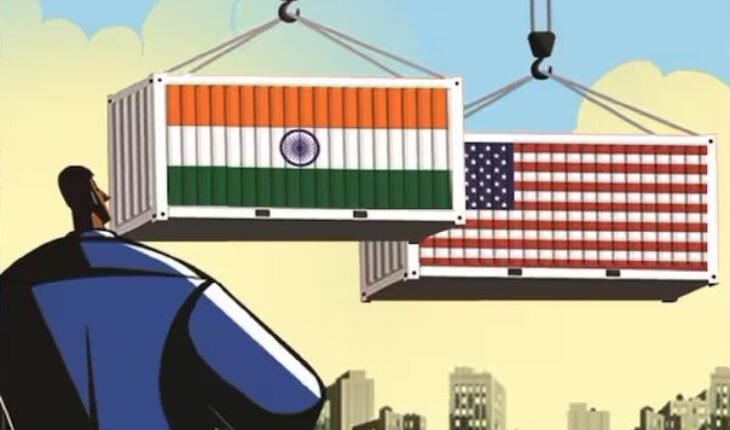In a move that’s likely to shake global healthcare supply chains, the Pharmaceuticals Export Promotion Council of India (Pharmexcil) has raised serious concerns about the U.S. government’s decision to impose a 25% tariff on all goods imported from India, starting August 1. This action, announced by former U.S. President Donald Trump, is expected to significantly impact the availability and affordability of essential drugs in the United States.
India, the world’s largest supplier of generic drugs, plays a crucial role in ensuring cost-effective access to medicines globally. Nearly 47% of the U.S. pharmaceutical supply, particularly in generic medications and Active Pharmaceutical Ingredients (APIs), comes from Indian pharmaceutical companies. Pharmexcil’s warning reflects the growing fear that this tariff could create serious ripples throughout the U.S. healthcare system.
India’s Crucial Role in U.S. Healthcare
India has long been recognized as a cornerstone in the global pharmaceutical supply chain, especially in the field of generic drug manufacturing. The country is not just a low-cost supplier, but also offers unmatched quality and scale. From life-saving oncology drugs to chronic disease treatments and antibiotics, Indian pharmaceutical companies ensure that millions of Americans get access to critical medications at affordable prices.
Pharmexcil Chairman Namit Joshi emphasized that these tariffs will ultimately disrupt a well-established supply chain. “Any disruption to this supply chain will inevitably lead to shortages and escalating drug prices, ultimately harming U.S. consumers and healthcare systems,” he said in a recent statement.
Short-Term Price Spikes, Long-Term Healthcare Crisis
While the immediate consequence is expected to be a spike in drug prices, the long-term impact could be far more severe. Pharmexcil warns that relocating drug manufacturing or finding alternative supply sources could take 3–5 years — and even then, matching India’s quality, affordability, and scale is unlikely.
India’s dominance in the supply of APIs and finished formulations stems from its robust pharmaceutical ecosystem, comprising leading contract manufacturers, R&D-focused companies, and cost-efficient production models. For example, a reputed pharma contract manufacturing company in India can produce world-class formulations at a fraction of the cost compared to U.S. or European counterparts.
Monopoly Model and Domestic Challenges in the U.S.
With the rising tariff tensions, the U.S. might consider localizing pharmaceutical production. However, setting up domestic units and achieving India-like efficiency would not only require massive capital investments but also years of policy restructuring and workforce training.
Moreover, India’s monopoly medicine companies operate in a unique market model that allows pharma entrepreneurs to offer exclusive rights in specific territories. This has helped Indian firms expand rapidly and create localized supply chains — a model that’s hard to replicate quickly in the U.S.
Economic & Humanitarian Consequences
From an economic perspective, the tariffs might seem like a strategy to protect domestic interests or penalize geopolitical decisions, such as India’s purchase of Russian oil or defense equipment. However, healthcare is not just an economic sector — it’s a humanitarian lifeline. Disruptions in medicine supply due to increased prices could directly impact vulnerable populations in the U.S., including the elderly and chronically ill.
Joshi added that Indian pharma companies are instrumental in supplying low-cost generics and critical care medications that make treatments like chemotherapy, dialysis, and cardiac care accessible to the average American.
Impact on Global Pharma Dynamics
The U.S. isn’t the only country relying on Indian pharmaceutical exports. The ripple effect of this tariff may also shift global alliances and trade dependencies in the pharmaceutical sector. Countries like Canada, the UK, and various African nations also rely heavily on India for affordable drugs. If production is diverted to other markets to absorb the U.S. shortfall, it could affect global access and pricing.
Additionally, other pharma-producing countries may not have the technological readiness, regulatory infrastructure, or logistical efficiency to fill the gap left by India in a short time frame.
Pharmexcil’s Stance and Way Forward
Pharmexcil has reaffirmed its commitment to supporting Indian pharmaceutical exporters and ensuring that global healthcare remains affordable and accessible. Joshi mentioned that the council is actively engaging with policymakers to mitigate the adverse impacts and educate global stakeholders about the consequences of such disruptive policies.
The council has also urged Indian pharma companies to diversify markets and invest in innovation while keeping costs competitive, despite global trade uncertainties.
Conclusion: A Call for Collaboration, Not Conflict
The Trump administration’s tariff decision on Indian goods may have political motivations, but its consequences will be felt at a deep human level — especially in the healthcare space. With India supplying nearly half of America’s pharmaceutical needs, this move risks inflating drug prices and limiting access for millions.
Rather than erecting trade barriers, this moment should serve as an opportunity for deeper collaboration between nations, focused on public health outcomes, innovation, and economic growth. The world’s healthcare future depends not on isolation, but on interdependence — and India remains a critical part of that ecosystem.

